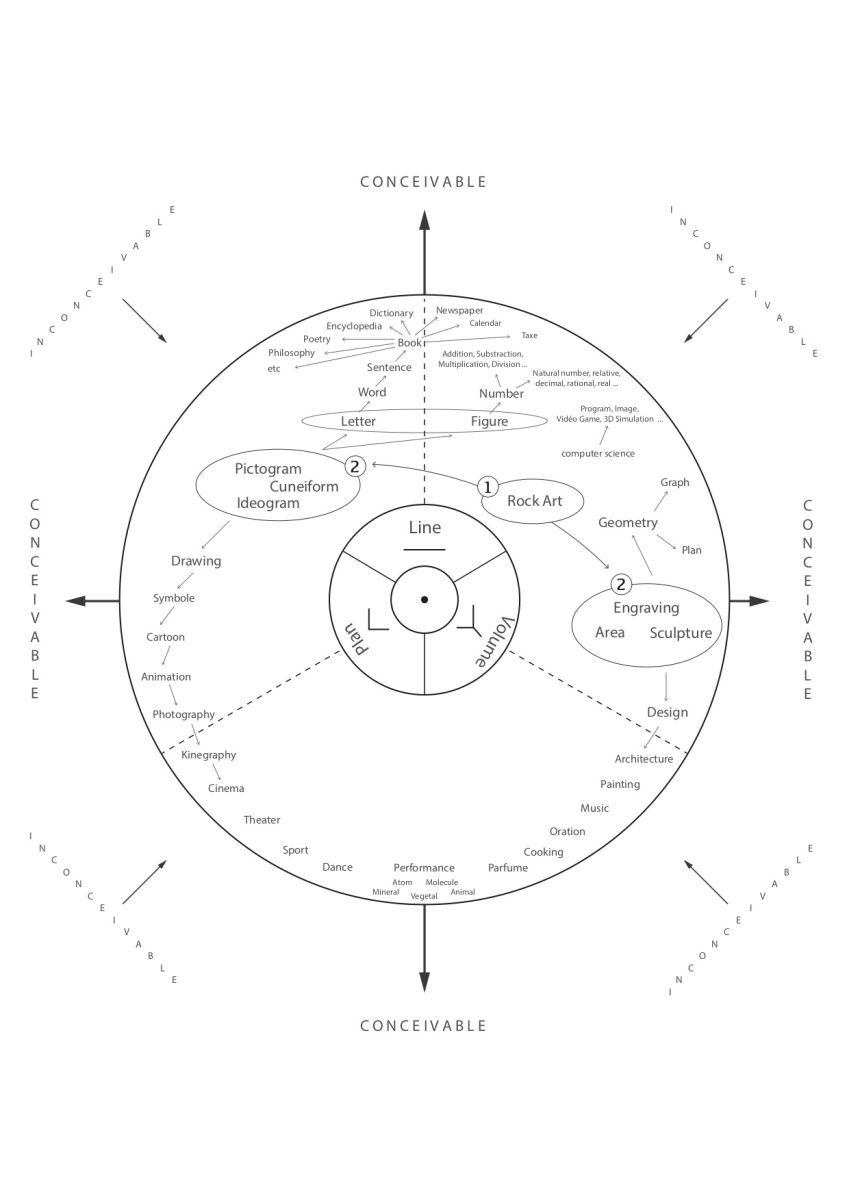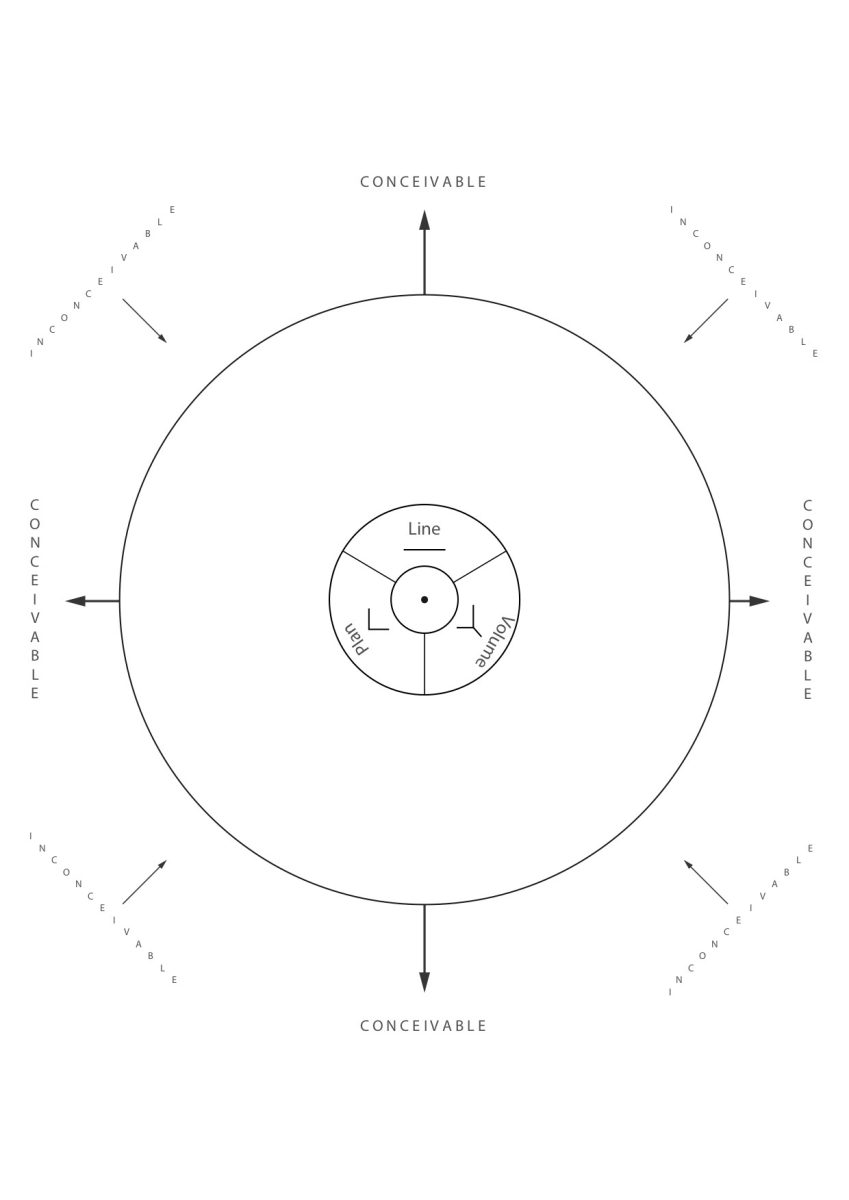The HyperBrut art
- Map of maps -
In my various adventures with HyperBrut art, in the middle of 2016, while trying to sort through my drawings, paintings, writings, I discovered the Map of Maps :
Another example would be W.A. Mozart’s symphony number 40. Let’s admit that the best representation of this symphony is the score itself. So in this case, this partition is in a mix between pictogram, letter, number, carved on a volume which would be the sheets of paper constituting the partition. Now let’s say that the best representation of this symphony is when so-and-so orchestra played at so-and-so. So in this case, this performance is in a mixture of performance, having taken place in a building structured in such and such a way to accommodate the orchestra which will sculpt the air. Let us now admit that the best representation of this symphony is the very idea that Mozart had of this work. So in this case, this representation is in the performance that is the living sculpture of Mozart himself.
In each case, it’s like zooming in on the Map of Maps. In the case of the score it seems almost flat, in two dimensions, then in the case of the orchestra or Mozart it involves more volume. But the line, the plan, and the volume are all three present in the representations of symphony number 40. And finally, isn’t it all of these representations that allow us to have a more precise idea of this symphony ?
I can take another example. What would be the best representation of a chair ? Could it be the drawing of some chair ? Or the design of your favorite chair ? Or would this be the set of all the chair designs that could have been made ? Or would it not be the volume that is the chair itself ? Or maybe the best representation would be the one we can each make of a chair.
One example I experienced when I was discovering this map was the example of my school. I wondered what was the best representation of my school when I was a kid. I found that the set of building plans on each floor, could give a good representation of the school. I realized that another good representation of the school was the sculpture that was the school. Other good representations of the school would have been photographs over time, or the architect’s drawing before the school was built, or the representation of the person who commissioned the building. Or another representation of the school could have been a novel that told the story of the building. And so on.
Thus all the representations of world maps or any other representation that you may have come across in your life are found in this Map of maps. And this map of the world or other representation, would be a precise section in the Map of maps between volume, plan, and line.
Small remark to say that it happens regularly in our life, to see inconceivable things appear in the field of the conceivable, hence the direction of the axes.
Now, to better understand what this point in the center of this Map of Maps looks like, I offer two examples. In the image below, I drew a black dot for you on a white background :
That is to say, I really wanted to draw a black dot on a white background, but since the dot has no thickness, I wanted to do it so well that in the end I didn’t put my pen on the sheet.
Now, in the image below, I’ve drawn you a white dot on a black background :
There you go, here you are with a description of the Map of Maps. I have described this to you in spite of the other quirks that I have encountered in HyperBrut art and HyperBrutalism, because this Map of Maps allows you to have an overview of all Brut-Gestures and because it it is with her and her point in the center that I was able to discover Univers 0.









